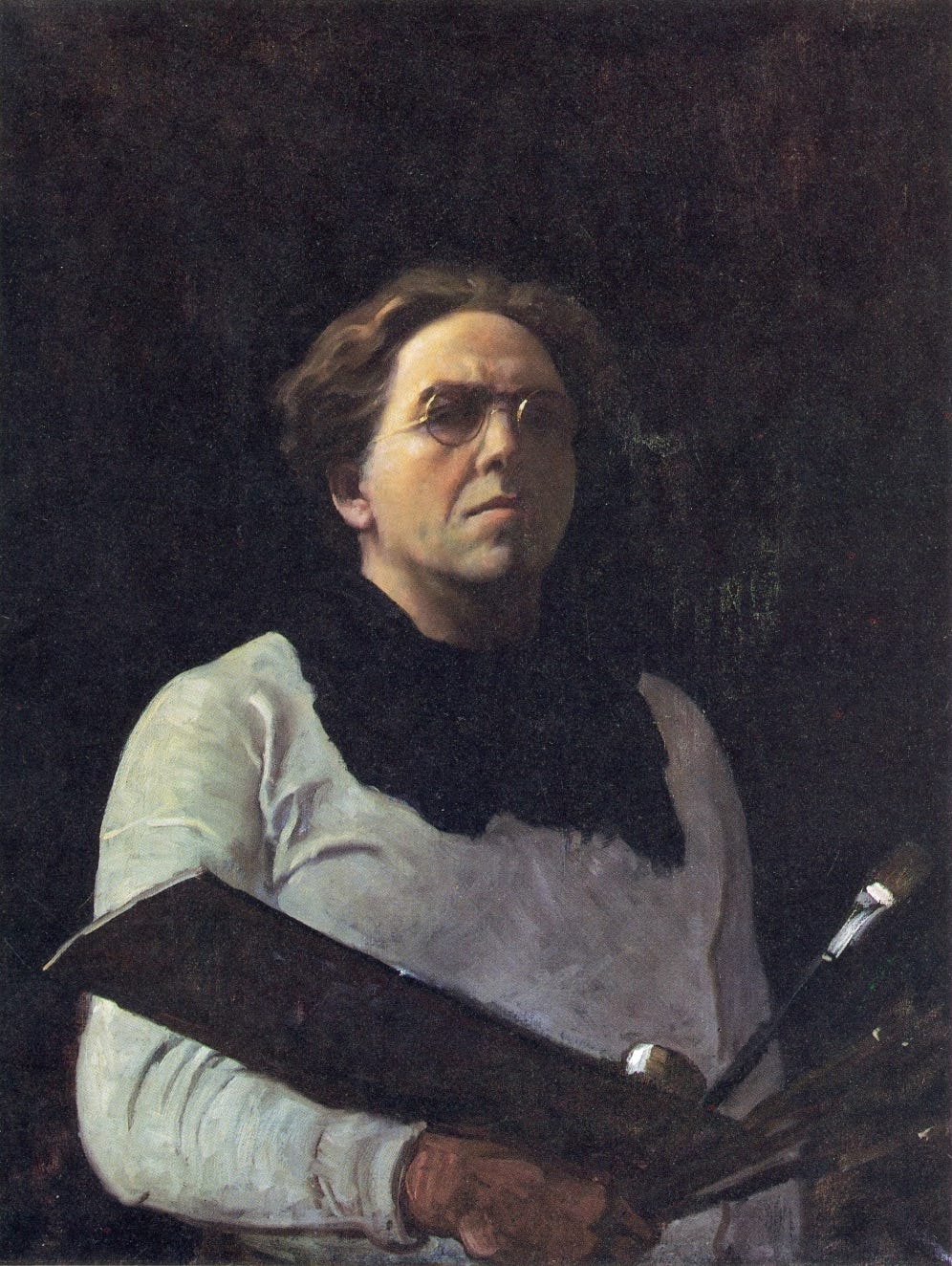N. C. Wyeth Self Portrait with Palette.
Howard Pyle, N. C. Wyeth, and His Children
My former student shares her latest painting (in progress), and it moves me to tears. Her portrayal of nuance in architectural detail and landscape has grown — as she has pursued her art quite on her own. I didn’t teach her this. The great artist N. C. Wyeth had a similar moment when he saw an exhibit of his son Andrew’s watercolours. “That boy!” he said reverently, seeing the inspired work of his youngest son!
Really the goal of art instruction should be to propel young artists further. An artist’s highest praise should be the thought that he or she has nurtured students of a high caliper — so high that it moves them to such emotion. The films here should be viewed as a treasury of N. C. Wyeth’s nurture of his artist children. Howard Pyle was his mentor, and Pyle and Wyeth created the tradition out of which sprang Norman Rockwell, and Ray Prohaska (who I shall reverently tell of in a future story, for he was MY teacher)!
It was Prohaska who told me to “get out of here, go work, and experience life.” He was a powerful figure (like N. C.), and he knew the value of living.
“No great artist ever graduated from college” — N. C. Wyeth
Pyle and Wyeth stressed the value of living and observing. Pyle taught his pupils to draw real things, over and over, knowing that the honed skill of observation was essential to the work of the imagination.
“Never paint in another man’s medium.” — N. C. Wyeth
N. C. had a pupil named Peter Hurd, who introduced N. C. and Andrew to the medium of egg tempera. N. C. was never comfortable in it though. Andrew, on the other hand, found his place in tempera (along with watercolour). His work in both mediums is stunning.
The Art of Illustration
N. C. Wyeth was always troubled by the fact that some saw the title ‘Illustrator’ as some sort of artistic pejorative. Never mind that his huge canvasses for Treasure Island are masterworks, it bothered him.
He would approach an illustration project in this manner. He never simply illustrated something the author had written. He would take something undescribed, but obviously part of the story nonetheless, and develop it. A great example is his illustration of the young man leaving home in Treasure Island. It’s not in the text. Wyeth enriches the manuscript by inserting this tender moment between mother and son as he departs.
Publishers initially were put off by Wyeth’s illustrations seeming to jump off of the page. He achieved this through his masterful use of composition and chiaroscuro. Publishers liked an illustration to “lie nicely within the text.” Kids, on the other hand, loved it when the colourful characters of Treasure Island leapt from the page! Ultimately the kids won. Illustration became a rich art — expanding the wonder of our childhood favorites.
Andrew’s son Jamie would return to the richness of his grandfather’s oils. N. C.’s other children are less well known, but no less talented. Their stories show the great gift a creative person can bestow through the nurture of his or her children.



